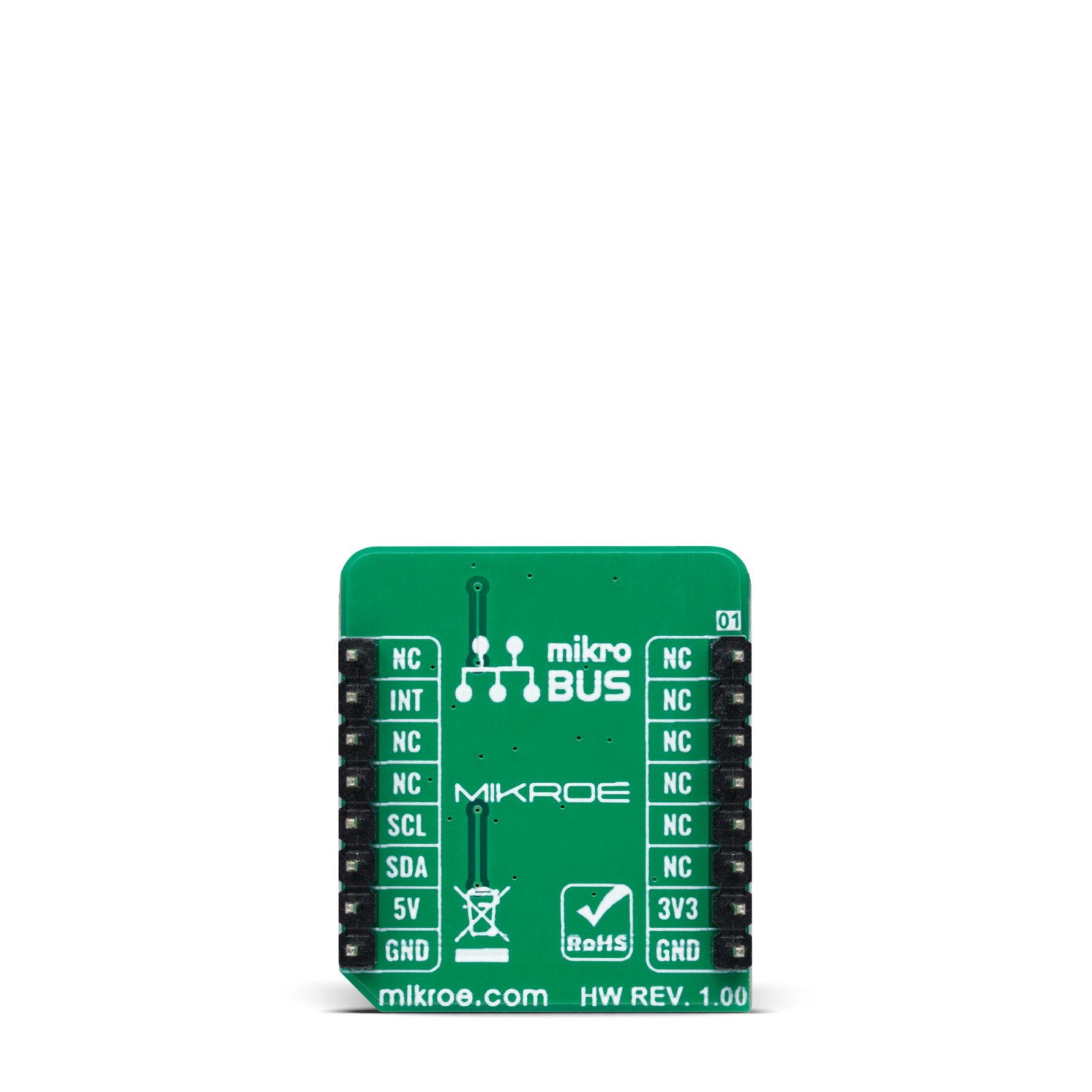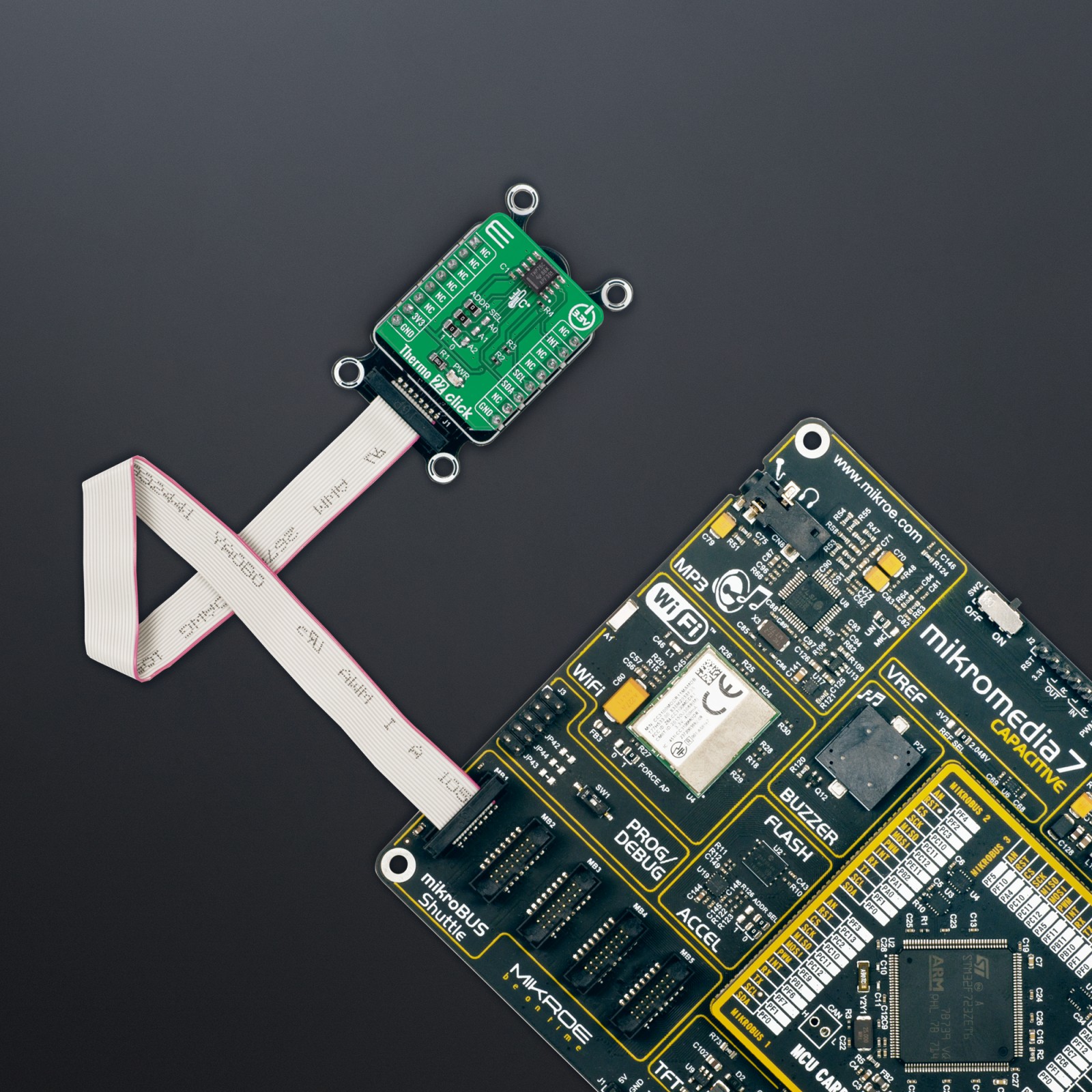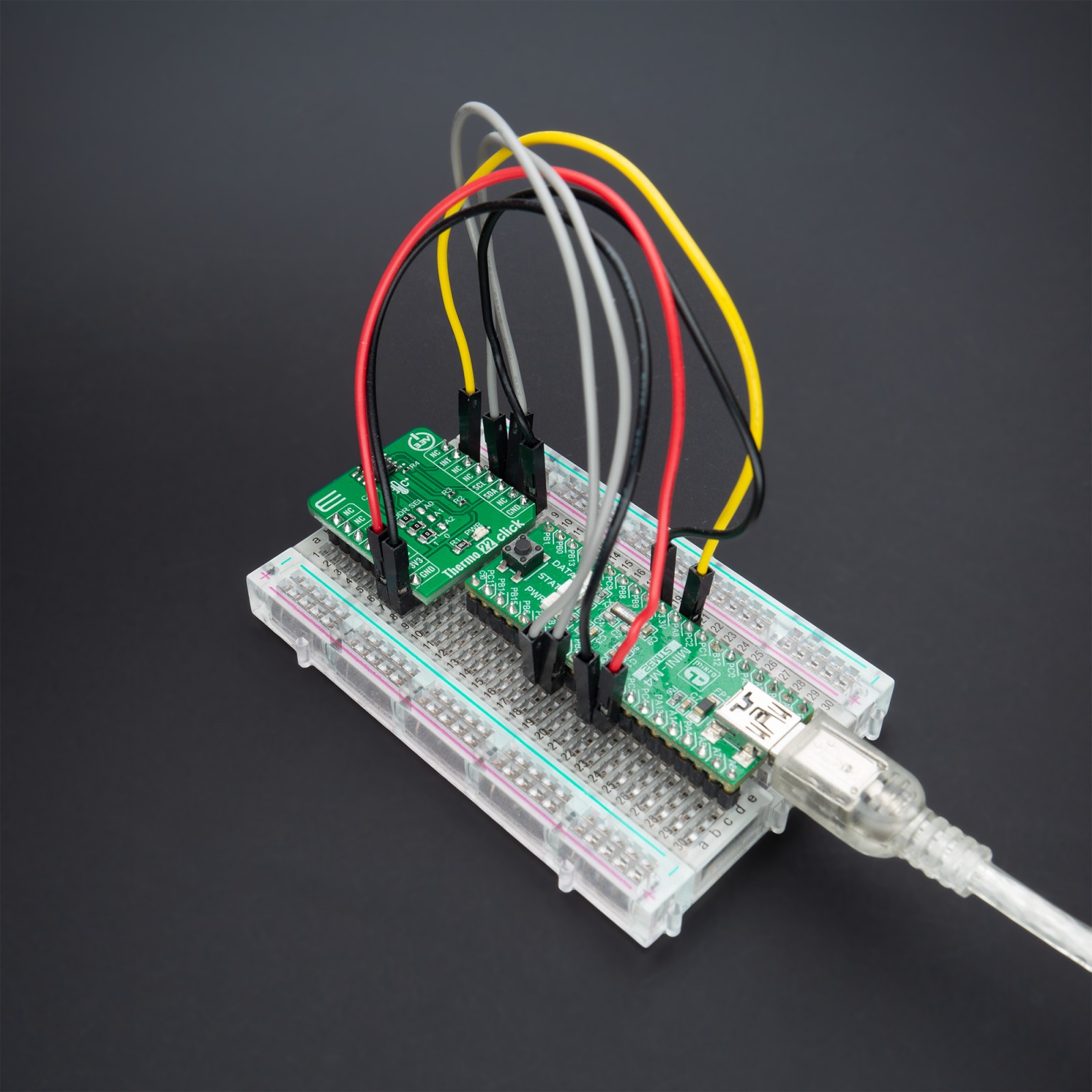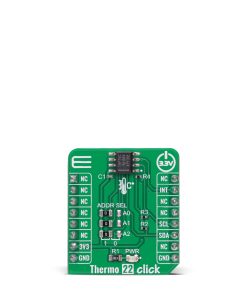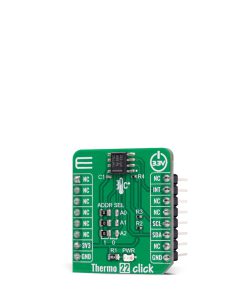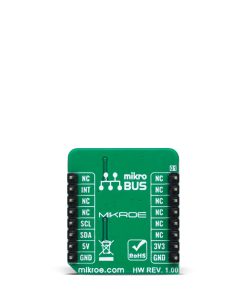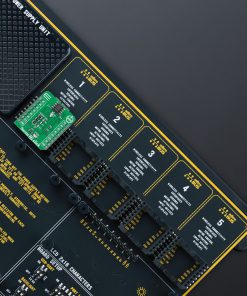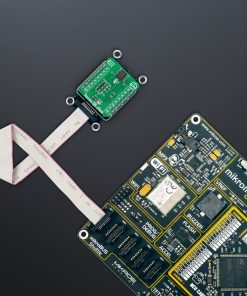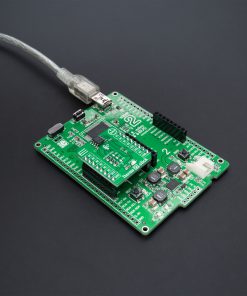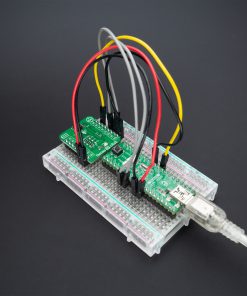Thermo 22 Click
R145.00 ex. VAT
Thermo 22 Click is a compact add-on board that provides an accurate temperature measurement. This board features the TMP75C, a high-precision digital temperature sensor from Texas Instruments. The TMP75C houses an integrated digital temperature sensor with a 12-bit analog-to-digital converter (ADC), a reference circuit, and serial interface logic functions in one package. Characterized by its high accuracy (up to ±0.25°C typical) and high resolution of 0.0625°C, this temperature sensor provides temperature data to the host controller with a configurable I2C interface. This Click board™ is appropriate for thermal management and protection of various consumer, industrial, and environmental applications.
Thermo 22 Click is supported by a mikroSDK compliant library, which includes functions that simplify software development. This Click board™ comes as a fully tested product, ready to be used on a system equipped with the mikroBUS™ socket.
Stock: Lead-time applicable.
| 5+ | R137.75 |
| 10+ | R130.50 |
| 15+ | R123.25 |
| 20+ | R118.61 |



